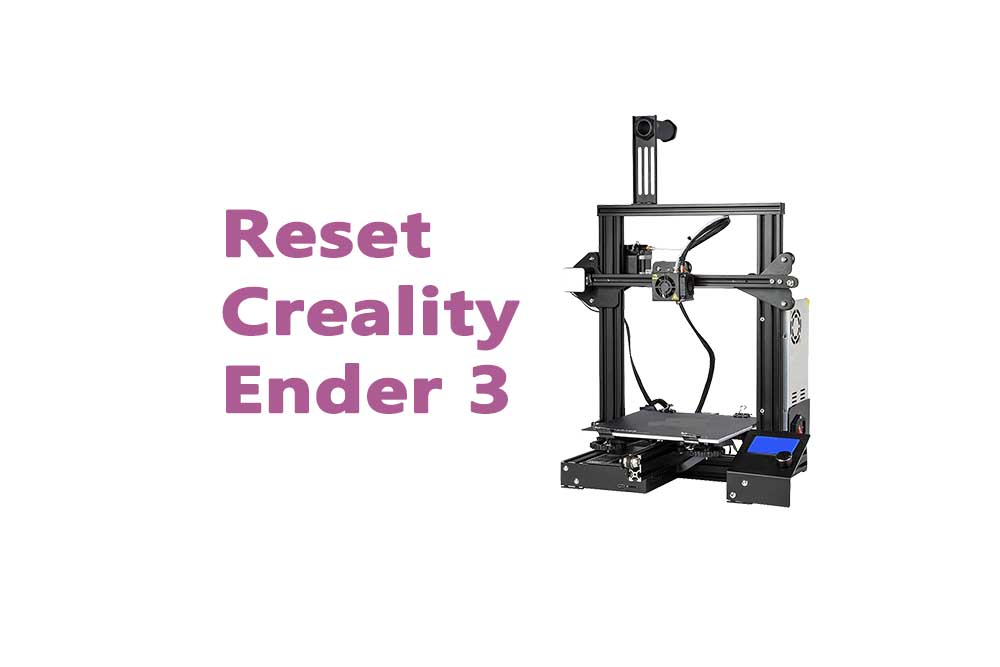What is Reset?
Resetting your 3D printer is often necessary when you are experiencing issues with prints or the machine itself. By resetting the printer, you will be able to clear any errors that may be causing problems. In some cases, a reset may also help improve print quality.
When to reset your 3D printer?
There are a few different situations when you might need to reset your 3D printer. If you are having trouble with prints, it is often necessary to reset the machine in order to clear any errors that may be causing the problem. In some cases, resetting the printer can also help improve print quality.

How to reset your 3D printer?
There are two ways to reset your 3D printer: through the LCD menu or by manually disconnecting and reconnecting the power supply. To reset the printer through the LCD menu, simply navigate to the “Settings” menu and select “Restore Factory Settings.”
This will clear all of the current settings and return the machine to its default state. To manually reset the printer, simply turn off the power supply and unplug it from the wall.
Wait a few minutes, then plug the power supply back in and turn on the printer. This will clear any errors that may be stored in the machine’s memory.
Common Problems while resetting in Creality:
There are a few common problems that can occur while resetting your 3D printer. One of the most common problems is that the machine may not return to its default state after the reset is complete.
In some cases, it may be necessary to manually adjust some of the settings in order to get the machine back to its original state. Another common problem is that the machine may lose its connection to the computer.
This can be caused by a variety of factors, but is often due to a loose connection between the two devices. If this happens, simply unplug and replug the USB cable between the computer and the printer.
How to solve these problems?
If the machine does not return to its default state after the reset is complete, you may need to manually adjust some of the settings. Simply navigate to the “Settings” menu and select “Restore Factory Settings.”
This will clear all of the current settings and return the machine to its original state. If the machine loses its connection to the computer, simply unplug and replug the USB cable between the two devices.
What are some things you should know before resetting?
Before resetting your 3D printer, there are a few things you should keep in mind. First, it is important to make sure that you have the latest firmware installed on your machine.
This will ensure that the machine is able to properly communicate with the computer and avoid any potential errors. Second, you should always backup your machine’s settings before resetting. This way, you can easily restore them if something goes wrong during the reset process.
Finally, it is important to be patient while resetting your machine. In some cases, it may take a few minutes for the machine to complete the reset process and return to its default state.
There are two ways to reset your 3D printer: through the LCD menu or by manually disconnecting and reconnecting the power supply. If you are having trouble with your machine, it is important to make sure that you have the latest firmware installed and to backup your settings before resetting.
In some cases, it may take a few minutes for the machine to complete the reset process and return to its default state.
FAQ’s:
1. What is a 3D printer?
Ans: A 3D printer is a machine that creates three-dimensional objects by depositing material in layers.
2. How does a 3D printer work?
Ans: A 3D printer typically starts with a digital 3D model, which is fed into the machine. The printer then deposits material in layers to create the object.
3. What are the benefits of using a 3D printer?
Ans: Some benefits of using a 3D printer include the ability to create custom objects, the ability to prototype products quickly and cheaply, and the ability to create one-of-a-kind objects.
4. What are some common problems with 3D printers?
Some common problems with 3D printers include clogged nozzles, incorrect filament diameter, and poor print quality.
5. How can I prevent common problems with my 3D printer?
Ans: Some tips for preventing common problems with your 3D printer include regularly cleaning the nozzle, using the correct filament diameter, and ensuring that your print bed is level.
6. What should I do if I experience a problem with my 3D printer?
If you experience a problem with your 3D printer, the first thing you should do is check the machine for any obvious issues. If there are none, then you should consult your user manual or contact the manufacturer for further troubleshooting assistance.
7. Can I use any type of material in my 3D printer?
No, you cannot use just any type of material in your 3D printer. Each machine is designed to work with specific types of materials. Consult your user manual or contact the manufacturer to find out which materials are compatible with your machine.
8. What are some common materials that can be used in 3D printing?
Ans: Some common materials that can be used in 3D printing include ABS plastic, PLA plastic, and resin.
9. Can I print metal with a 3D printer?
Yes, you can print metal with a 3D printer, but you will need a special type of machine known as an additive manufacturing (AM) printer. These printers use lasers or electron beams to melt metal powder into the desired shape.
10. What are the limitations of 3D printing?
Some limitations of 3D printing include the need for special printers to print metal, the inability to print large objects, and the limited selection of materials that can be used.

